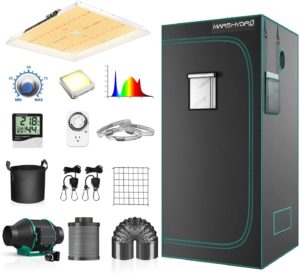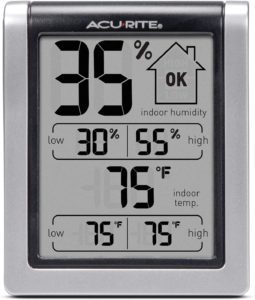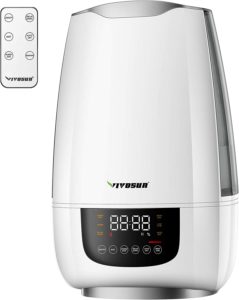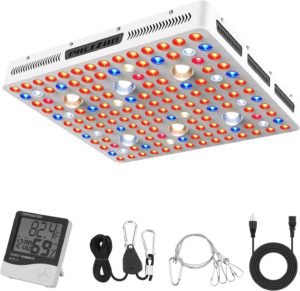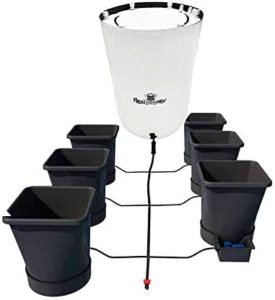An indoor grow tent setup makes it possible to grow virtually any type of plant no matter your home’s temperature, humidity, or other environmental conditions. These portable greenhouses can be built for your specific needs, and you have many options for setups and sizes.
So setting it up really depends on what kinds of plants you’re growing, where you’re keeping your grow tent, and the climate where you live.
Each tent will reflect your design for what you need, based on what you want to grow, how much of it, and how much space you have for a tent.
the grow tent
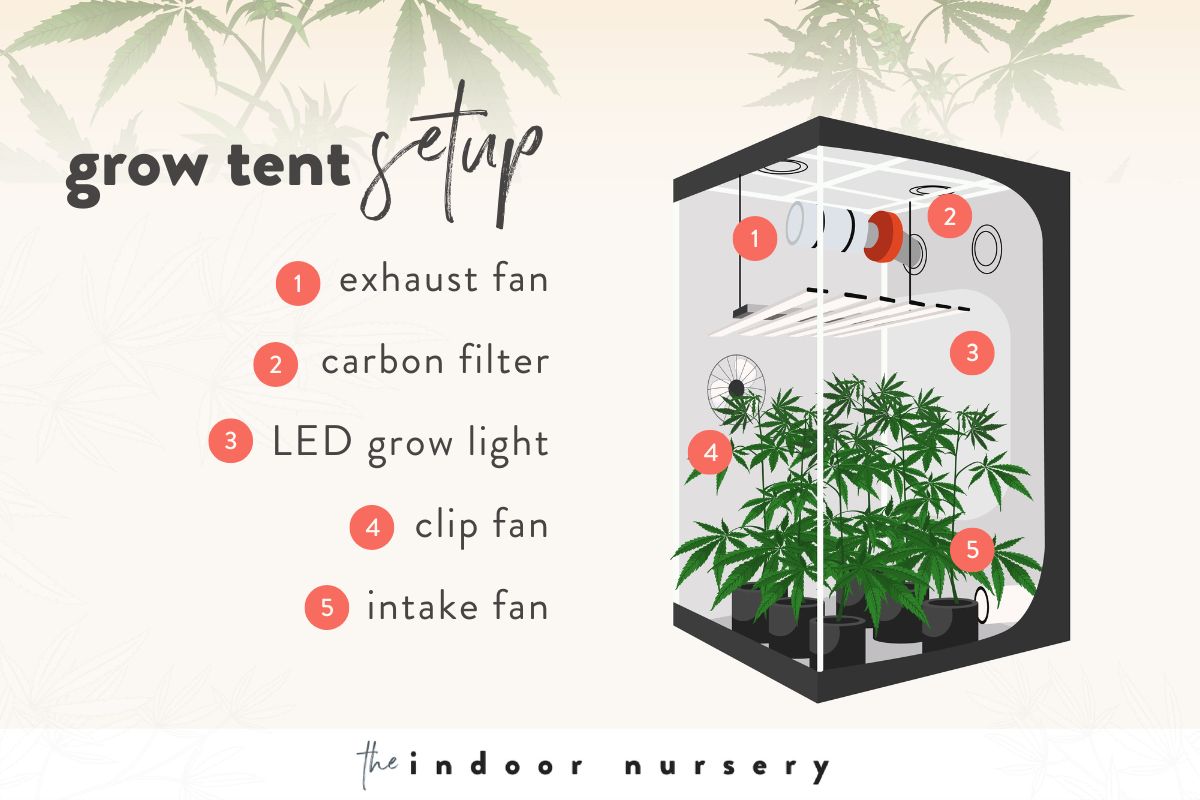
Certain plants require particular environmental conditions that you just can’t always have outside, or that may be uncomfortable for you to maintain in your home. A grow tent allows you to control the internal environment for temperature, light, and humidity to provide a supportive and healthy growing environment for the specific needs of your plants year-round.
They allow you to grow food, flowers, cannabis, and any other plants indoors in protected, dedicated spaces.
A complete grow tent kit can be purchased that includes the tent and all equipment, or individual items can be bought and assembled. They come in a wide range of sizes, from a small 2 x 2 x 4 box to a 10 x 10 x 8 foot room-in-a-room. These tents are designed to be set indoors and they all are made with port holes for ventilation systems, irrigation systems, and power cords.
The size you choose will be based not only on what you want to grow, but the space you have to put the tent and its external ventilation and connections. Depending on their size, a grow tent can be put in the corner of a room, in the basement, or in a dedicated grow room.
As a rule of thumb, big tents should have at least a foot of space above them for the ventilation ducts.
It’s easy to set up a grow tent properly:
- They come with structural frames and larger ones will have interior support.
- Some have one zipper door, others have two, and some can unzip all the way around.
- The tents are made with synthetic canvas, and usually are light-tight.
- Most tents have a reflective interior that makes more efficient use of the lighting.
Depending on the size and location of the tent, you’ll need to take a few steps to control the internal environment. In a dry space or environment, you may need to supplement more humidity. Similarly, warm places may need to cool their tents more than places that get cooler weather, where they, similarly, may have to heat their tents more than warmer locations.
All tents should have certain metrics monitored, like the temperature and humidity level, to make sure that it’s an ideal environment for the plants.
The size of the tent will also determine the organizational approach you’ll take to spacing and placing your plants. Shelving units that fit your specific tent size are a good way to provide structure and make use of vertical space for certain kinds of plants. In other tents, plants might need all of the open vertical space it can get and shelves won’t be the right choice.
If you’re just starting out, then I recommend getting a full grow tent kit, like this one, so that everything you need comes in one package. That way, you can get to know the setup, what each item does, and what your needs are before you start investing in a personalized setup.
air in grow tents
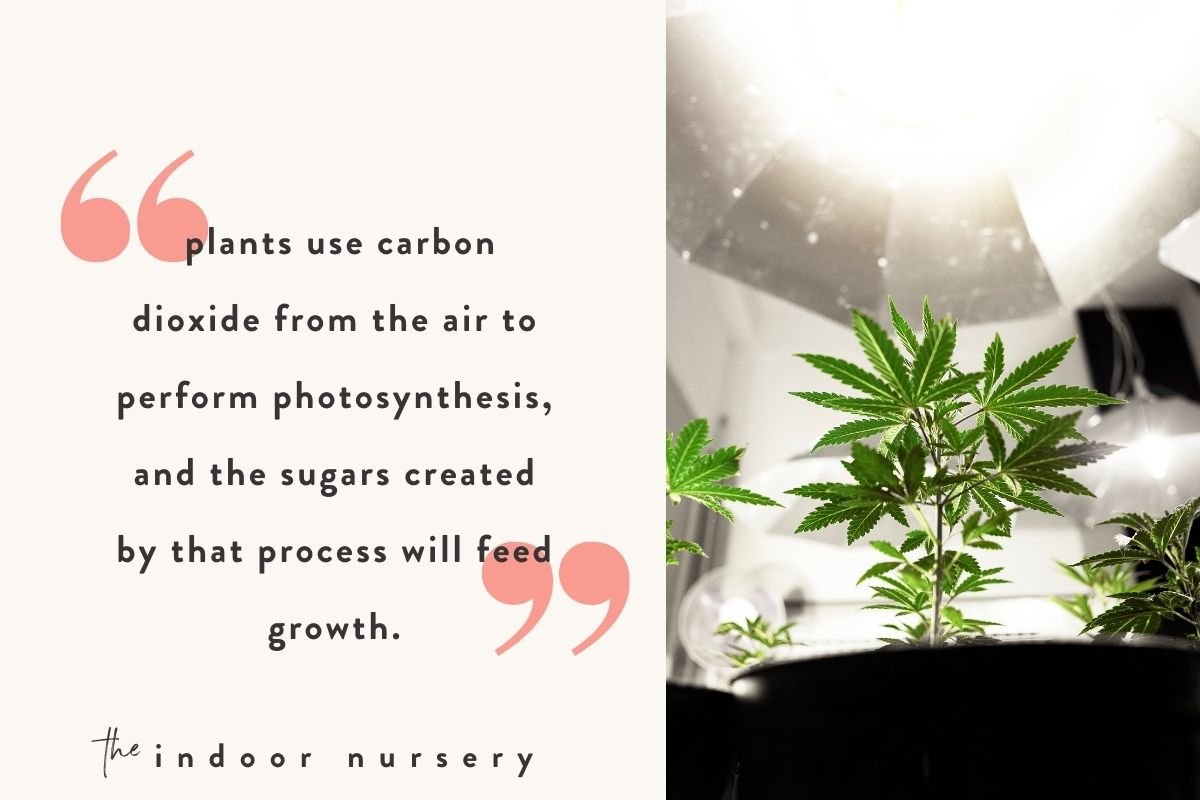
Like their outdoor greenhouse counterparts, grow houses need to be well-ventilated to maintain a comfortable and healthy growing environment. The temperature and humidity have to be adjusted as well to encourage germination, fruiting & flowering, and general growth to maturity.
For example, many grow tent owners use a supplement of carbon dioxide to support plant growth in their space. Plants use carbon dioxide from the air to perform photosynthesis, and the sugars created by that process will feed growth. Understanding the plant stages and nutritional needs will help you create a good environment for them.
To get you started, here are some of the basics.
ventilation and circulation
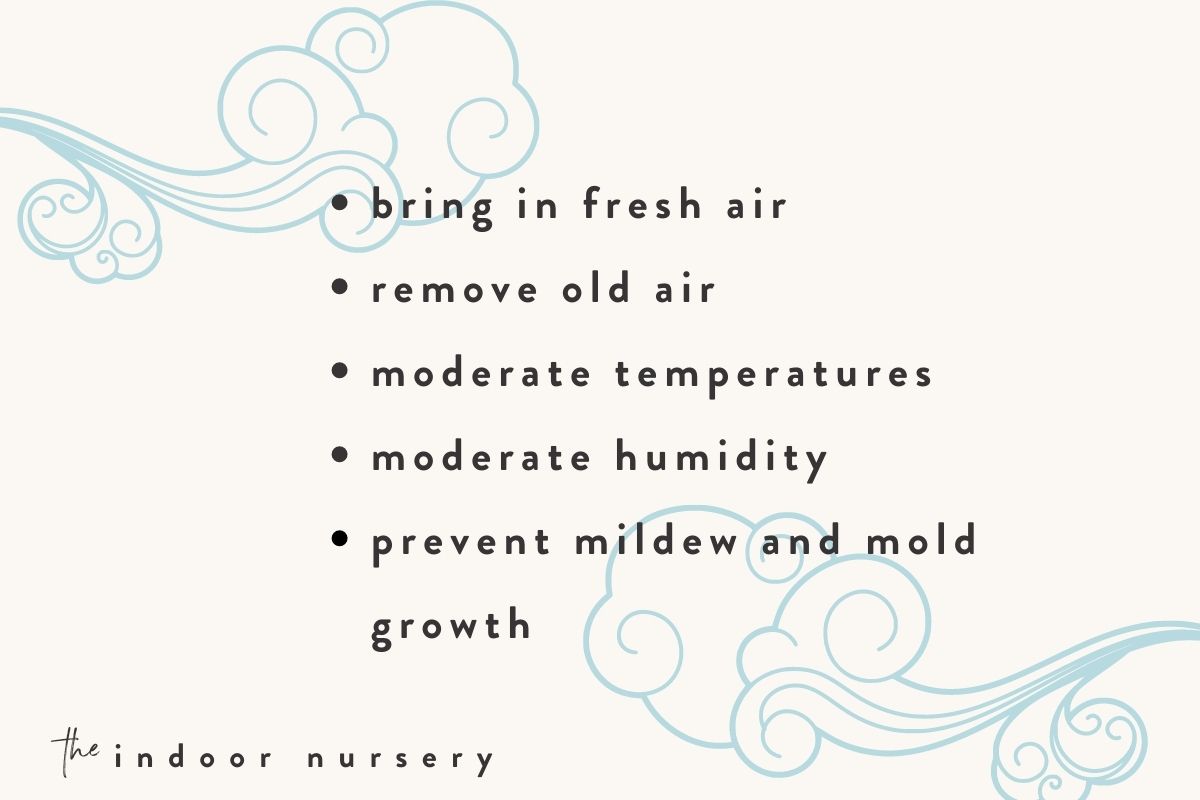
Grow tents need external ventilation for several reasons:
- Bring in fresh air
- Remove old air
- Moderate temperatures
- Moderate humidity
- Prevent mildew and mold growth
Tents need both an intake fan and an exhaust fan to keep air moving and circulating in the space. Larger tents need internal fans as well to circulate the air inside of the space so that no stale air gets trapped in corners or under racks. Exhaust fans get positioned at the top of the tent so the fresh air can be pulled upwards, helping the air flow outwards and removing the heat that builds up at the top of the space.
Intake and exhaust fans can be equipped with carbon filters that capture particles and reduce or eliminate odors from the tent, depending on the amount of plants you’re growing.
PRO TIP: The ducts should be connected to a window to expel the air outdoors rather than into the room, where it could be taken back into the tent.
temperature control
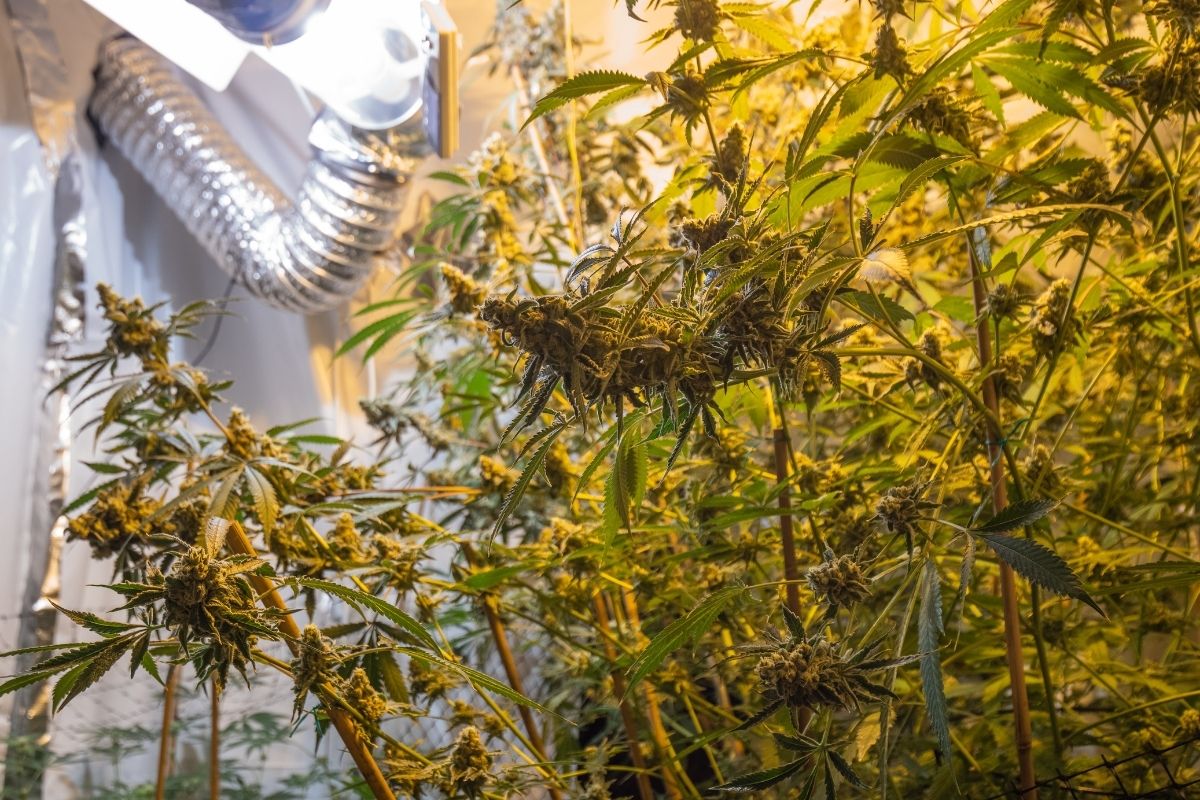
The ventilation helps maintain the temperature levels in your tent, where the flow of air both keeps plants cool and prevents moisture from building up. Larger grow tents may need heaters and/or air conditioners to maintain the temperature. Again, this will depend on your location, the ambient temperature of the room, the season, and the plants you’re growing.
A thermometer in the grow tent is important to show you how warm or cool the tent is, then you can make the necessary adjustments. Some ventilation systems come with a thermometer and automatically turn on a fan or heater when the air reaches a set temperature. Most plants grow in the mid 70’s, about the normal room temperature, but conditions like humidity and ventilation will affect how quickly a tent’s internal environment can shift.
humidity levels
Exhaust fans are important air control to keep a grow tent from becoming too humid. Young plants need more moisture in the air to grow, but when mature plants transpire, they release moisture into the air and may raise the humidity level too high. The water they receive also evaporates and adds moisture to the air.
On the other hand, if a grow tent needs more moisture, a humidifier is an easy way to raise the humidity. Some plants like more humidity than others, so a thermometer that also reads humidity is a great way to make sure the levels are right for your plants and their stage of growth.
learn more about humidity
- The 6 Best Dehumidifiers For Grow Tents
- 7 Best Hygrometers For Indoor Plants
- 9 Best Plant Humidifiers For Indoor Jungle Vibes
- The best grow tent humidifier for indoor gardening
- How to increase humidity in a room with indoor plants
grow lights
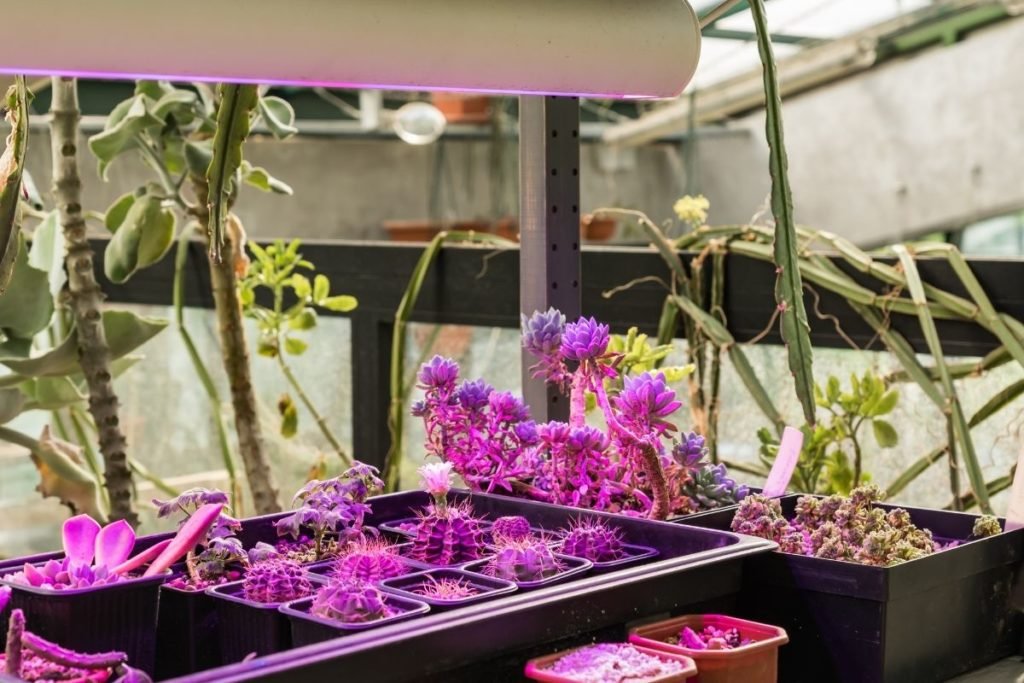
The power and number of your lightbulbs will again depend on the size of your tent. Too powerful of a grow light in a small tent can burn your plants or make the environment too hot, and too few lights in a large tent will result in a space that’s too dark for the plants to properly mature and produce full leaves, fruits, or flowers. LED grow lights are favorites for grow tents for their bright light and low heat output. The tent’s frame usually has support for overhead lighting, and attachments may be included with light fixtures, or can be bought to ensure the light is set up properly.
Many tents are made with a reflective interior so that no light is wasted, and plants get top to bottom coverage. Some growers run their lights at night when the ambient temperatures are cooler, and the heat from the lights can be used efficiently to warm the space. Lattices can be installed for climbing plants, benches for rows of individual plants, and horizontal netting can be set up to keep plants that are on the ground upright and evenly spaced so they can see the maximum amount of light.
irrigation
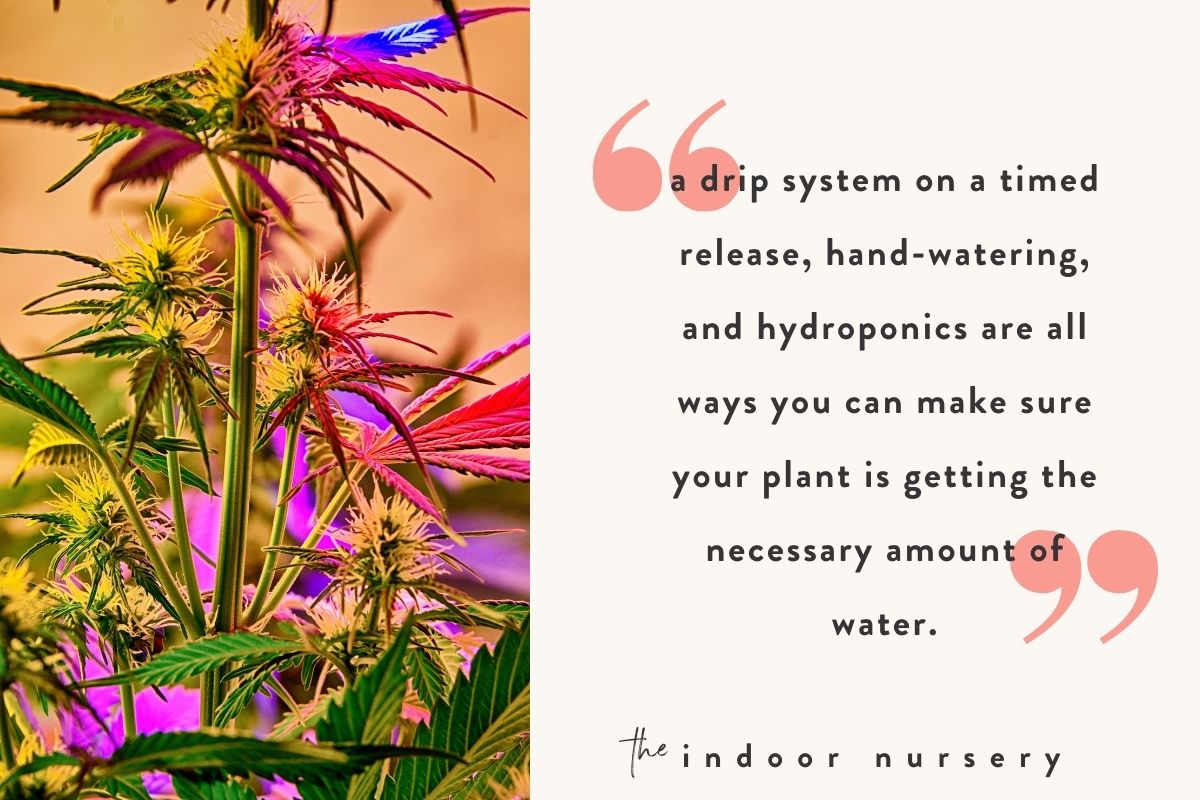
A grow tent has as many options for irrigation as an outdoor greenhouse does. A drip system on a timed release, hand-watering, and hydroponics are all ways you can make sure your plant is getting the necessary amount of water. Grow tents can be set up anywhere, but they need to be near a spigot or another water connection for an automatic irrigation system.
A popular watering system among growers is AutoPot, which allows you to water your plants themselves through the reservoir. You only need to fill up the reservoir when it gets low and the rest of the watering takes care of itself.
timed controls
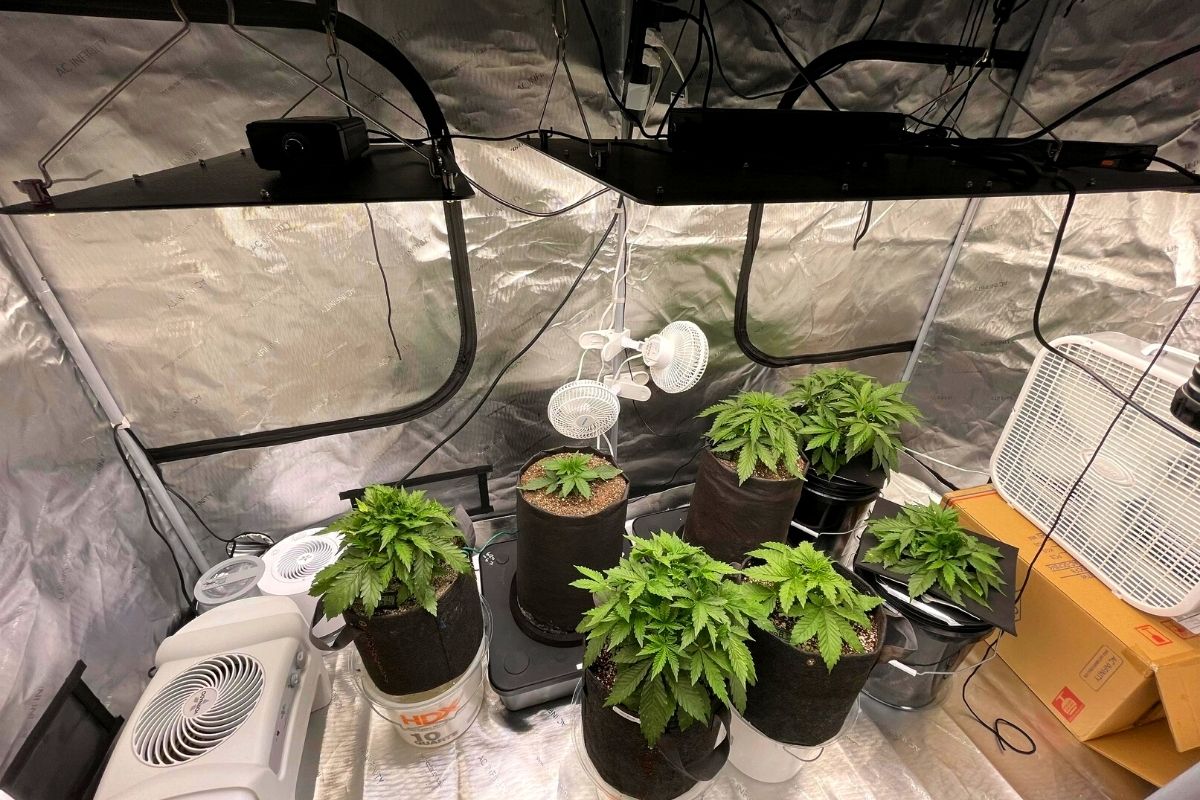
Growing equipment frequently comes with timing mechanisms that automate much of the climate control tasks. Some meters have remote applications that you can use to control them at a distance and monitor their activity and the conditions in the tent. For equipment that doesn’t have integrated timers, they can be plugged into outlet timers on the power strip to automate the controls.
maintenance
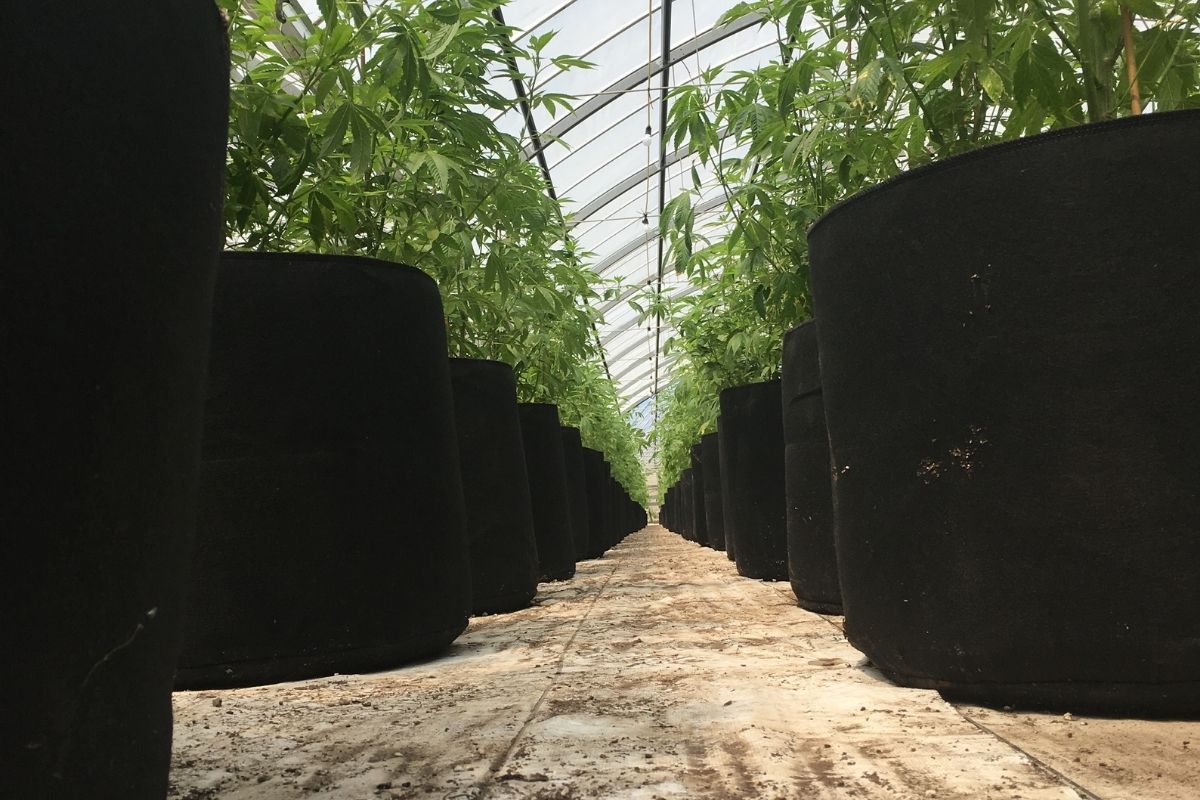
As contained spaces, grow tents can accumulate some inevitable dirt over time and should be cleaned regularly on a schedule appropriate for the size of the tent. For some types of growing setups, a new rotation is a great opportunity to clean up the tent before starting a new set of plants. Good air circulation and filtration will help control the dust buildup, and buildup of dirt may vary based on your growing medium.
pros and cons of grow tents
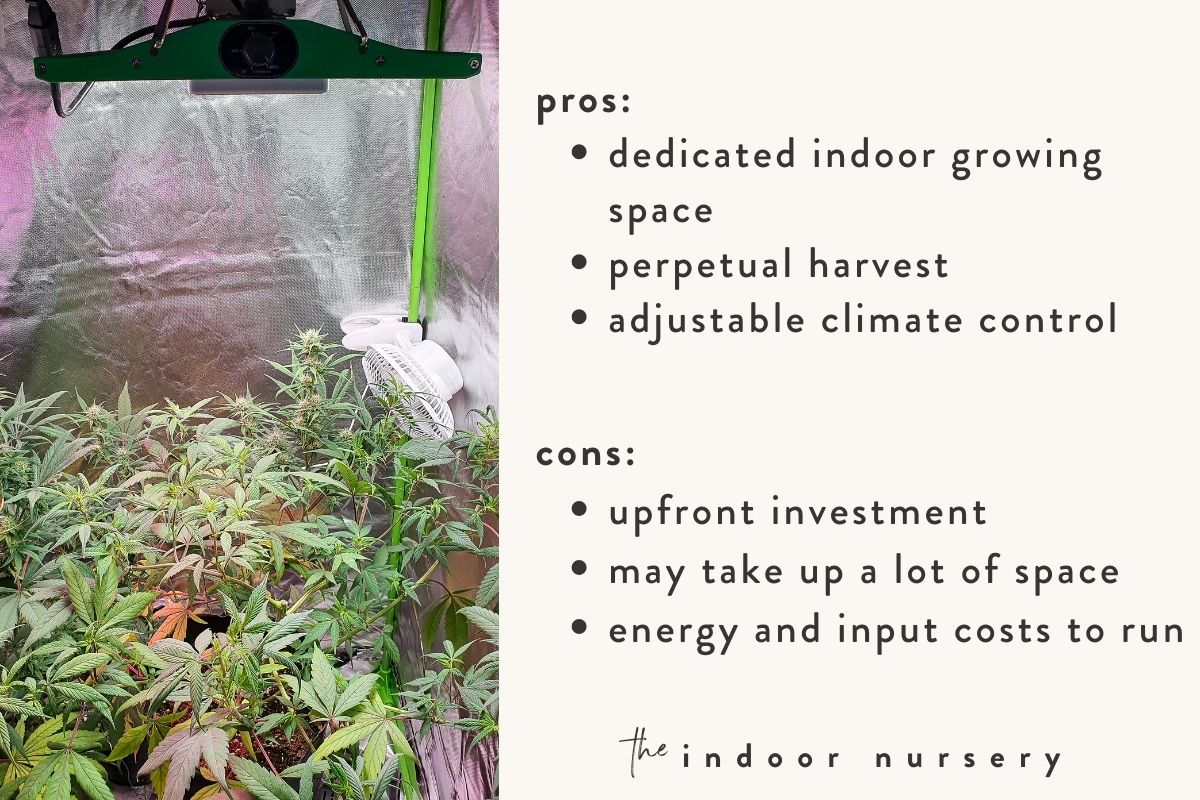
Keeping a grow tent has its benefits and its challenges. These include:
Pros
- Dedicated indoor growing space
- Perpetual harvest
- Adjustable climate control
Cons
- Upfront investment
- May take up a lot of space
Like all gardening, grow tents require a certain amount of dedicated attention for the best output, but that output will make the effort worth it!
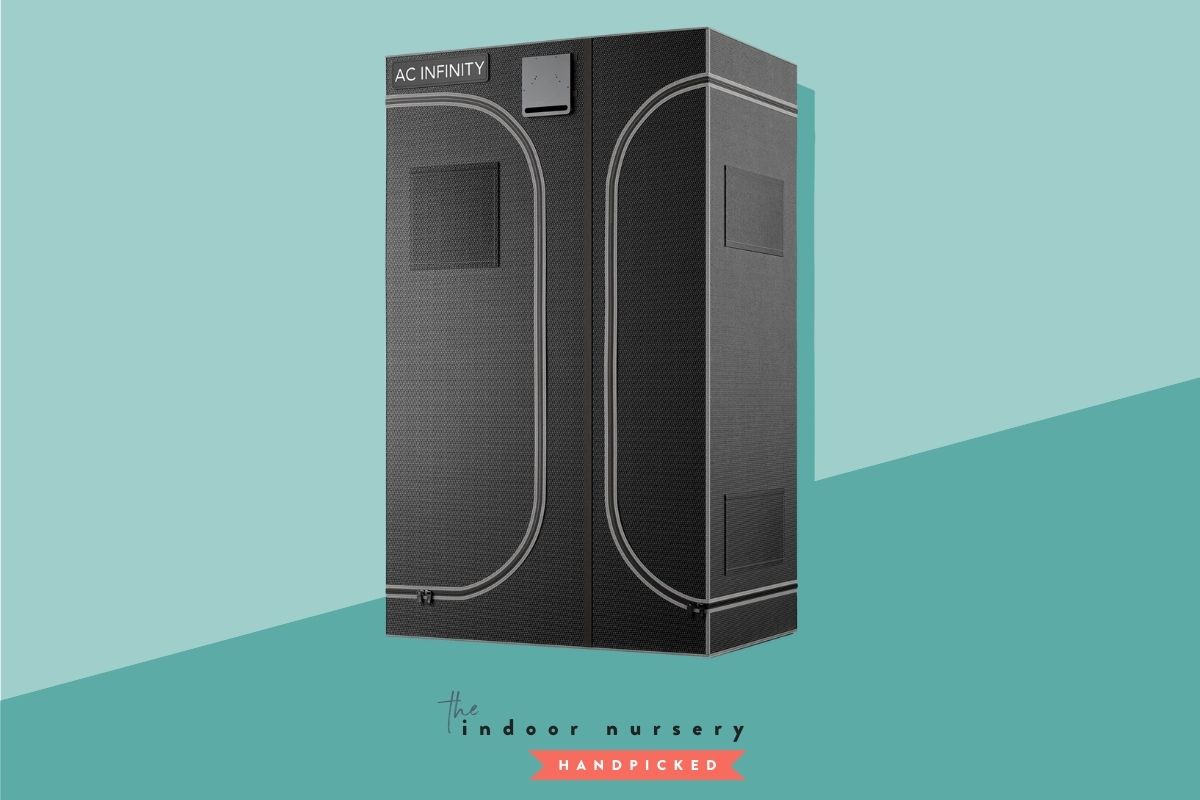
tips
- Plan ahead to design your grow tent. Your options for use of interior space may vary by the size of the tent, but most sizes can contain a variety of different growing setups. Hydroponics, different shelving units, or the number and type of plants are all options that may be arranged in one way or another in any given space. Planning this upfront and writing it down for reference will help guide you in setting up the best type of tent for your growing goals.
- Keep a garden journal. Keeping a journal to record metrics, yield, and comments about patterns and other things you notice while gardening will help you in your long-term management of your tent. It can be a reference as you evaluate the conditions in the tent, and can help you evaluate your equipment if you eventually want to upgrade over your journey. Keeping that information in one place will help you manage your tent like the greenhouse it is: a sensitive system with a lot of moving parts to keep an eye on.
More About Grow Tents
- The 6 Best Dehumidifiers For Grow Tents
- Vivosun Grow Tent Review: Our Hot Take
- The 12 best grow tents for indoor plants
- 5 best small grow tents for indoor gardening
- The best inline fans for grow tents for disease-free plants
- what we *really* think about the ac infinity grow tent
- raising grow tent humidity: how to do it & what to know
- Grow tent setup: here’s what you need
- our hot take: mars hydro grow tent
- our tips on controlling grow tent humidity


